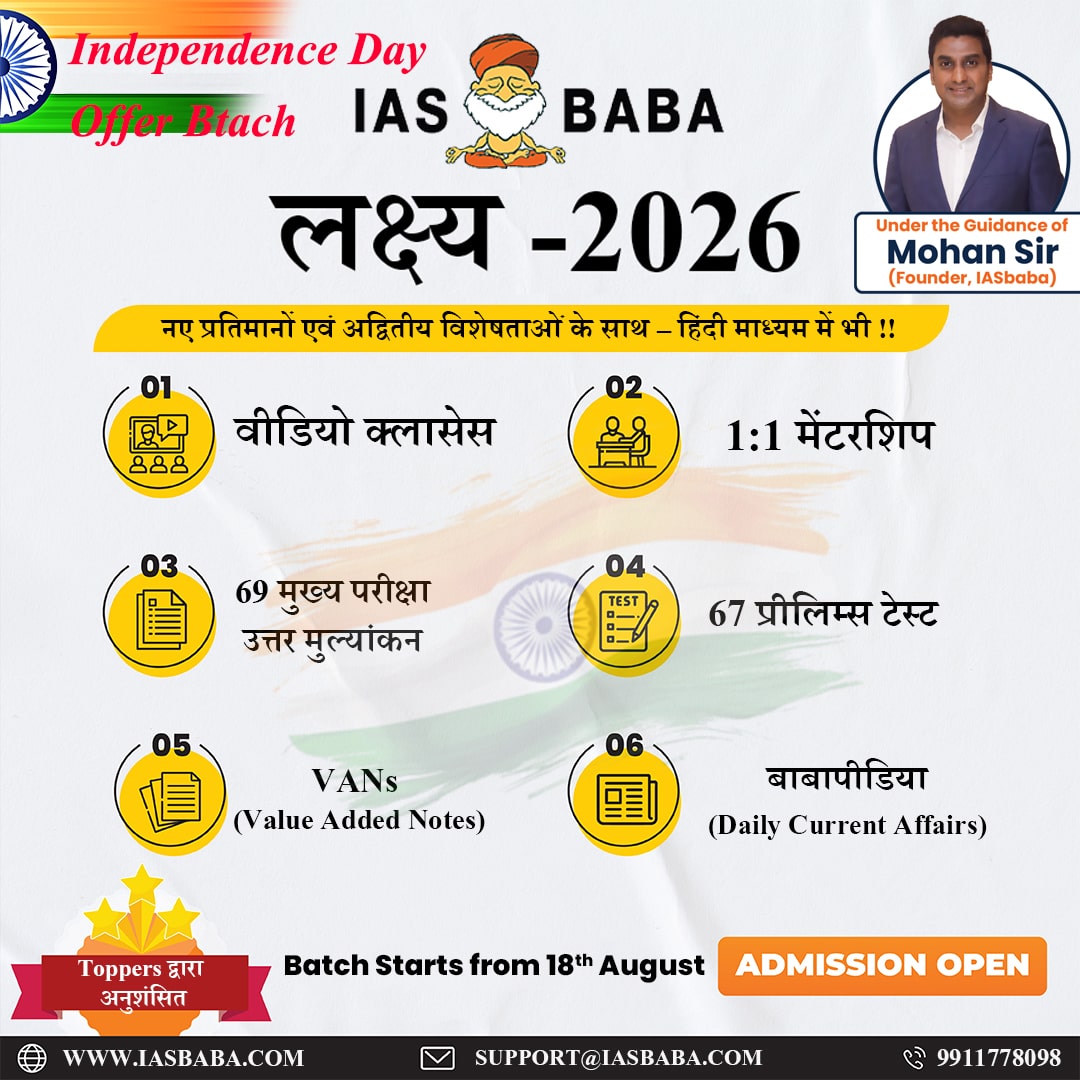Indian History & Post-Independence, TLP-UPSC Mains Answer Writing
Q.5. “Indian philosophy and traditions have deeply influenced the conception and execution of monumental architecture in India.” Discuss this statement with suitable examples. (250 words, 15 marks)
Introduction
Indian monumental architecture reflects the country’s deep spiritual and philosophical traditions. From Vedic to Bhakti ideas, these beliefs shaped how sacred spaces were designed. Indian architecture is a “philosophy in built form.”
Body
Philosophical and Cultural Influence on Monumental Architecture
- Dharma: Temples and stupas were often aligned with cardinal directions to represent cosmic order and moral balance, as seen in the layout of the Lingaraja Temple in Bhubaneswar.
- Moksha: The rising form of the shikhara or vimana symbolised the soul’s upward journey toward liberation, which is reflected in the towering structures of Brihadeeswara Temple and the temples of Khajuraho.
- Mandala: Many temples were designed using mandala patterns and Vastu Shastra principles, which aimed to connect human space with cosmic space, like the Sun Temple at Konark shaped like a chariot of the sun god.
- Bhakti: With the rise of the Bhakti tradition, temples became more personal and emotionally engaging, such as the Vitthala Temple in Hampi and the Meenakshi Temple in Madurai, which allowed for devotional singing and open public participation.
- Buddhism: Stupas like the one at Sanchi were shaped by Buddhist ideas of meditation and enlightenment, using circular paths (pradakshinapatha) to allow inward reflection during ritual walking.
- Ahimsa: Jain temples such as the Dilwara Temples in Mount Abu reflected ideals of non-violence, purity, and simplicity, using delicate marble work without excess ornamentation.
- Tawhid: In Islamic architecture, the idea of the unity of God was expressed through symmetry, geometric patterns, and calligraphy, clearly visible in monuments like Qutub Minar and Gol Gumbaz.
- Festivals: Temple designs included wide mandapas and processional routes for public rituals and festivals, like the Rath Yatra held at the Jagannath Temple in Puri.
- Community: Temples also acted as centres for music, dance, learning, and gatherings, influenced by the belief that art itself is a form of devotion, as described in texts like the Natya Shastra.
- Symbolism: Sculptures of deities, celestial beings, and animals were not just decoration but carried deep moral, religious, and cultural meanings, found across temple walls in both North and South India.
- Water Symbolism: Water near temples symbolizes cleansing and renewal.
Conclusion
Indian monumental art is not just about structures—it is philosophy carved in stone. Rooted in deep spiritual and moral ideas, it continues to influence India’s identity, religious life, and even modern planning, remaining a lasting part of our culture and governance.














